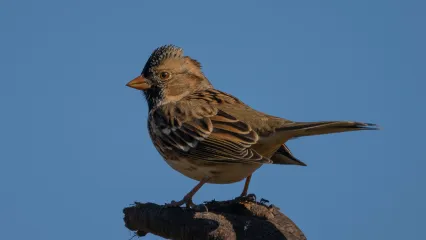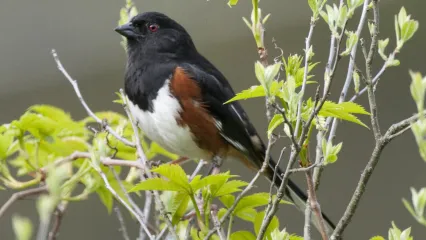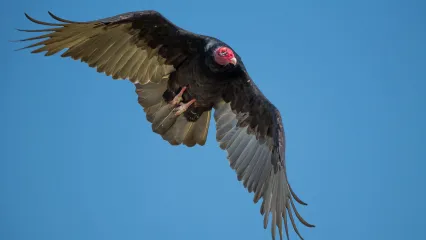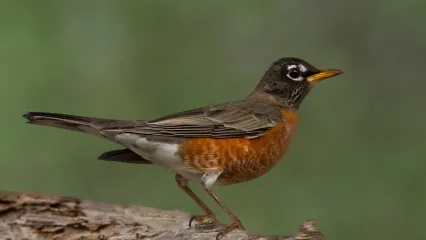
Description
This species is slightly larger than other sparrows and has a slightly longer tail in proportion to the rest of its body. The belly is white with a few short black or dark brown streaks on the sides. The bill is a distinct orange-pink color. The face has variable amounts of black. In some adults, a black facial “mask” extends from the forehead down the face and onto the throat and upper chest. Younger birds have a small amount of black streaking on the forehead and short black streaks on the sides of the throat and across the chest in a pattern that resembles a necklace. At first glance, Harris’s sparrows may resemble a male house sparrow, but it can be distinguished by its larger size, white belly and pink-orange bill.
Size
Approximately 5.9 to 6.3 inches in length. Wingspan of 8.3 to 9.4 inches.
Habitat
This sparrow is common in central and western Oklahoma in brushy fields, thickets, and woodland edges. It’s not as adapted to urban living as the house sparrow and white-throated sparrow, but it is a frequent visitor to rural bird feeders on the periphery of towns. Harris’s sparrows are found nearly statewide from mid-October to early May. They are rare in far western and far eastern Oklahoma. As much as 20 percent of the population winters in Oklahoma.
Life Cycle
At feeders, Harris’s sparrows eat millet, milo, cracked corn and black-oil sunflower seeds. Away from feeders they eat small seeds.
How To Observe
These birds are usually seen in flocks of six to 25 birds. They feed on or close to the ground searching for seeds, usually near the cover of tall grasses, sunflowers and ragweed, or thickets of plums, blackberries and other shrubs. They feed on seeds scattered on the ground or on a platform-type feeder placed 6 to 18 inches of the ground.


